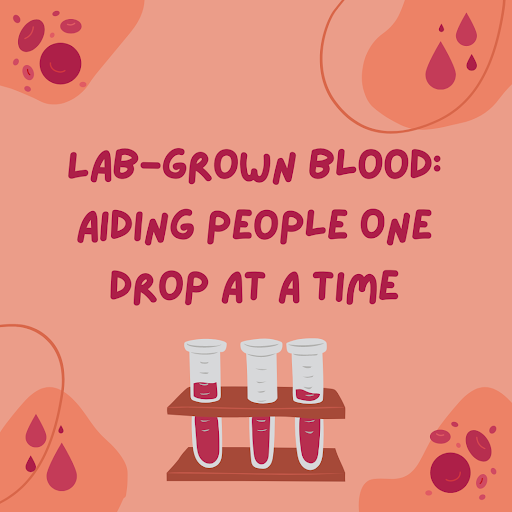Lab-Grown Blood: Aiding People One Drop At A Time
By Laura Tran, PhD, C2ST Intern, Rush University
Blood is the fluid of life.
It contains three types of cells: platelets, white blood cells, and red blood cells. (1) Platelets are responsible for forming blot clots when we are injured. White blood cells are responsible for aiding our immune system by fighting off infection. Red blood cells carry oxygen throughout the body.

These cells are crucial for our health, but some people suffer from various blood disorders.
Blood disorders can affect the amount, shape, and/or function of any of these three components of blood. Some common blood disorders that affect red blood cells include anemias and thalassemias.
For example, people with anemia suffer from low red blood cell counts. People with sickle cell anemia form abnormally shaped red blood cells (sickle-shaped) which prevent oxygen from being transported efficiently. People who are affected by thalassemia have lower levels of hemoglobin which is a protein in red blood cells that is responsible for carrying oxygen throughout the body. (2)
Patients with sickle cell anemia and thalassemia (depending on the severity) can be treated with blood transfusions to improve the oxygen-carrying capacity of their blood.
For those who have rare blood types, a challenge arises in the supply of available donated blood. It can be difficult to find the right blood donors. The problem is further exacerbated by the fact that donated blood has a limited shelf life of about 42 days.
How can we ensure that people get the blood they need when they need it?
Recently, two healthy patients in the U.K. received a small amount (5-10mls, roughly a few teaspoons) of lab-grown blood to see how it would behave inside the body. A total of 10 volunteers are expected to receive these two small blood donations. (3)
How was this possible?
Scientists used adult stem cells to create lab-grown blood. Stem cells are cells that have the ability to develop into specific cells as the body needs them. In particular, hematopoietic (hema=blood and poietic=making) stem cells are cells that can develop into any type of blood cell (e.g., platelets, white blood cells, or red blood cells).
These stem cells were isolated from a standard donation of whole blood and then placed in a nutrient solution for 18-21 days to encourage them to multiply and grow into mature blood cells. This solution was filtered to isolate the new red blood cells.
Volunteers in this trial will receive two small blood donations at least four months apart, one with a standard donation of red cells and the other with lab-made cells from the same donor.
This process allows researchers to compare the red blood cells’ lifespans. Normal blood donations have a mixture of new and old red blood cells. Lab-grown blood is much fresher and is expected to last at least 120 days (the lifespan of red blood cells). So far, researchers have not observed any detrimental side effects.
While this technology is not meant to replace regular blood donations, it allows scientists to produce both normal and rare blood for people who rely on regular blood transfusions. If the lab-grown blood lasts longer in circulation, these patients will require less frequent transfusions. However, researchers are still a long way off from generating the amount needed in full transfusions.
This process couldn’t be possible without human blood donations. Blood is the gift that keeps on giving. If you are able to, consider donating blood!
References: